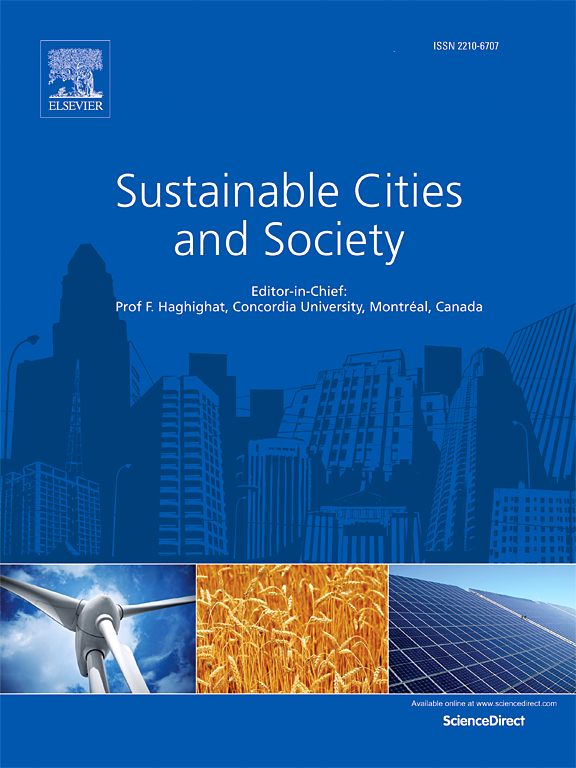Revealing the synergy between carbon reduction and pollution control in the process of new-type urbanization: Evidence from China's five major urban agglomerations
IF 10.5
1区 工程技术
Q1 CONSTRUCTION & BUILDING TECHNOLOGY
引用次数: 0
Abstract
As a sustainable transformation of urbanization, it is unclear whether China's new-type urbanization (NTU) can promote the collaborative governance of carbon reduction (CR) and pollution control (PC). Based on the data of China's five major urban agglomerations, this study constructed a systematic framework consisting of synergy measurement, relationship exploration and driver analysis to reveal the synergy between CR and PC in the process of NTU. The results indicated that with the steady growth of CR and PC, the coupling coordination degree of the two increased from 0.6457 to 0.9030 in 2014–2022, upgrading from primary synergy to excellent synergy. From the perspective of decoupling, all urban agglomerations improved the relationship between NTU and CR/PC with 89 and 92 cities exhibiting the state of strong decoupling, respectively, but there were differences in the decoupling types of cities within each subsystem of NTU. Overall, NTU and its subsystems significantly drove the synergy between CR and PC, while the driving effects presented a spatial heterogeneity. The Yangtze River Delta was the only urban agglomeration that fulfilled the driving effects of all subsystems of NTU. These findings provide theoretical and empirical values for taking advantage of NTU to mitigate climate change and optimize air quality.
求助全文
约1分钟内获得全文
求助全文
来源期刊

Sustainable Cities and Society
Social Sciences-Geography, Planning and Development
CiteScore
22.00
自引率
13.70%
发文量
810
审稿时长
27 days
期刊介绍:
Sustainable Cities and Society (SCS) is an international journal that focuses on fundamental and applied research to promote environmentally sustainable and socially resilient cities. The journal welcomes cross-cutting, multi-disciplinary research in various areas, including:
1. Smart cities and resilient environments;
2. Alternative/clean energy sources, energy distribution, distributed energy generation, and energy demand reduction/management;
3. Monitoring and improving air quality in built environment and cities (e.g., healthy built environment and air quality management);
4. Energy efficient, low/zero carbon, and green buildings/communities;
5. Climate change mitigation and adaptation in urban environments;
6. Green infrastructure and BMPs;
7. Environmental Footprint accounting and management;
8. Urban agriculture and forestry;
9. ICT, smart grid and intelligent infrastructure;
10. Urban design/planning, regulations, legislation, certification, economics, and policy;
11. Social aspects, impacts and resiliency of cities;
12. Behavior monitoring, analysis and change within urban communities;
13. Health monitoring and improvement;
14. Nexus issues related to sustainable cities and societies;
15. Smart city governance;
16. Decision Support Systems for trade-off and uncertainty analysis for improved management of cities and society;
17. Big data, machine learning, and artificial intelligence applications and case studies;
18. Critical infrastructure protection, including security, privacy, forensics, and reliability issues of cyber-physical systems.
19. Water footprint reduction and urban water distribution, harvesting, treatment, reuse and management;
20. Waste reduction and recycling;
21. Wastewater collection, treatment and recycling;
22. Smart, clean and healthy transportation systems and infrastructure;
 求助内容:
求助内容: 应助结果提醒方式:
应助结果提醒方式:


